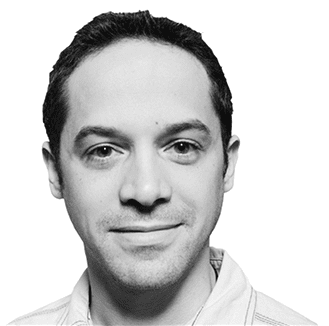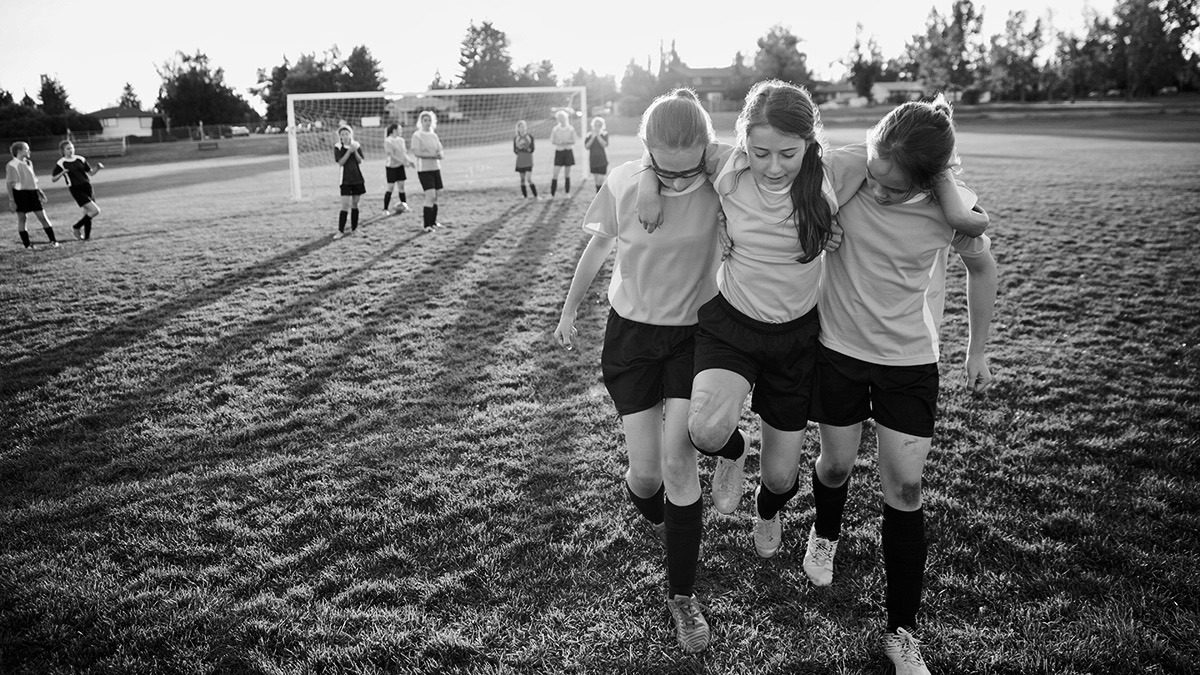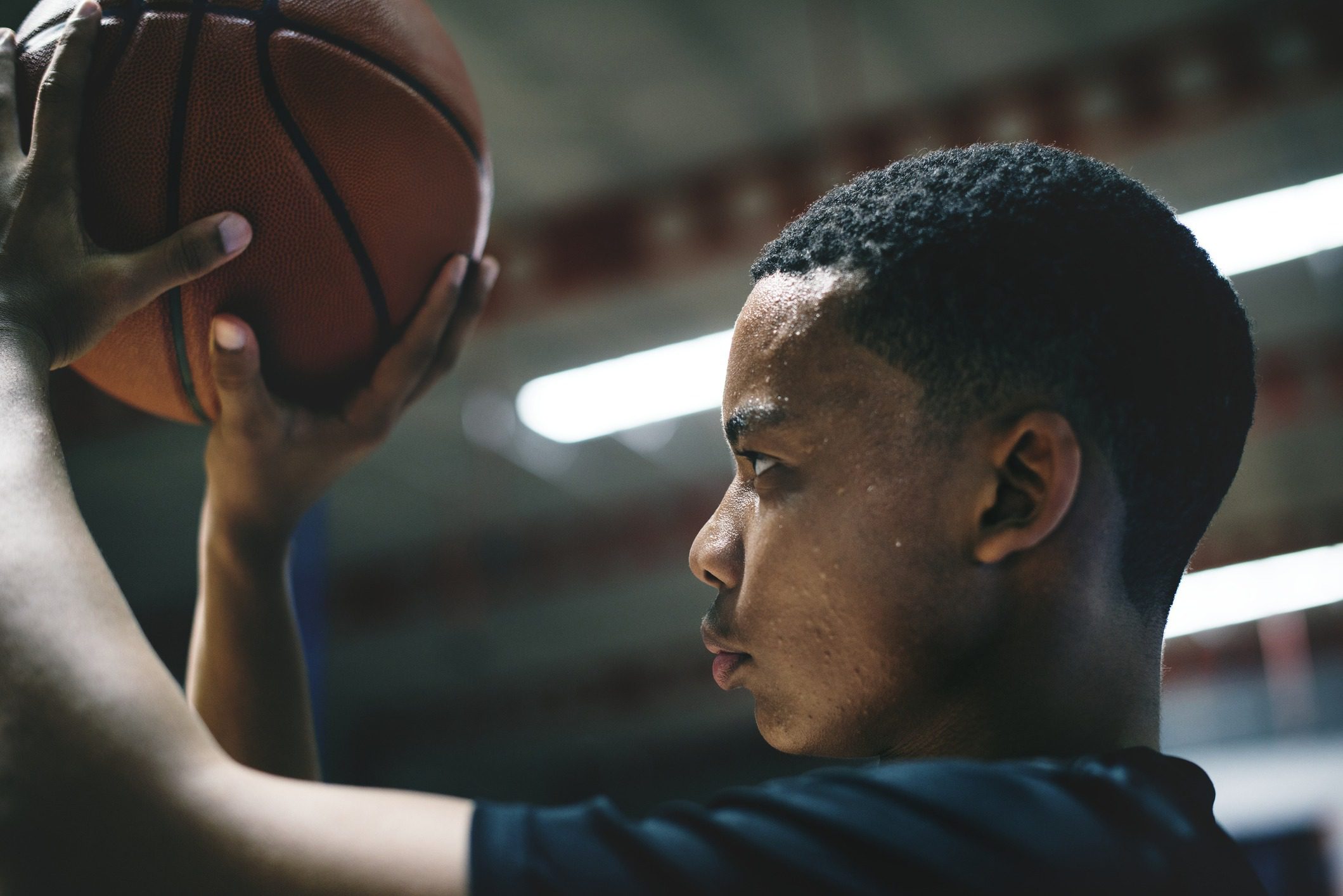Why Range Beats Specialization for Young Athletes
Coach Development | Strength & ConditioningABOUT THE EXPERT

David Epstein
David Epstein is the author of the forthcoming Range: Why Generalists Triumph in a Specialized World, and of the New York Times bestseller The Sports Gene. He has master’s degrees in environmental science and journalism and has worked as an investigative reporter for ProPublica and a senior writer for Sports Illustrated. He lives in Washington, DC.
Back in 2013, David Epstein followed up one of the biggest scoops in Sports Illustrated’s illustrious history (see: breaking the A-Rod PED story, with Selena Roberts) with a landmark book, The Sports Gene. Featuring globetrotting reporting, the book elevated the nature vs. nurture debate, delved deep into the topics of epigenetics and deliberate practice, and became a perennial bestseller. Six years and a stint at ProPublica later, Epstein is back with his second book, Range: Why Generalists Triumph in a Specialized World. In this interview, he shares insights on the dangers of early specialization in youth sports, the importance of match quality, and why coaches and parents should encourage young athletes to dabble.
// What are some of the physical issues that it can create when athletes specialize in one sport too young?
Neeru Jayanthi did an interesting longitudinal study of youth athletes who are specialized. He found that the number one predictor of whether they would suffer what he called an adult-style overuse injury, like a stress fracture in their back or torn ligament in their elbow, was the youth athlete being specialized. Another predictor was family income – wealthier families were more likely to have kids with these serious overuse injuries. He concluded that families who could pay for traveling teams and coaches all year round to specialize had kids who were more likely to get hurt. Good intentions were inadvertently leading to these injuries.
We’re right in the middle of this issue at elite level sports because we’re seeing a generation that has been pushed more in that direction now when they were younger. In Major League Baseball, about a third of the pitchers have had their UCL, the ligament in their elbow, operated on. Struan Coleman, who’s a physician for the New York Mets, suggested that they’re being set up by micro tears in the ligament when they’re younger from throwing way too much.
I once wrote an article about torn hip labrums in butterfly-style hockey goaltenders. Pretty much every hockey goaltender now uses this style to some extent even though Patrick Roy, who was the greatest butterfly goaltender of all time, didn’t use it until he was a professional. Yet many kids are now learning from the time they’re really young and their developing skeleton isn’t really ready for that. They end up with the head of their femur being misshapen. Eventually it starts scraping away on the labrum, which is like the fibrous tissue that keeps the joints stable. And so it ends up tearing. Then you have to get the head of your femur shaved down and the labrum repaired. Marc Philippon at The Steadman Clinic said he was fixing labrums in teenagers and had done a hip replacement for a 25-year-old.

// How can diversifying into different sports help reverse this trend?
Cirque du Soleil measures their injury rates against Canadian gymnastics. Their physiologist is a guy named Dean Kriellaars, and they have a ton of data. They decided to test teaching their performers the basics of several other disciplines just to see what happened. Subjectively they found that it made them more creative in designing their own performances, and objectively it lowered their injury rate by a third compared to Olympic-level gymnastics. Diversifying the activity seems to have a protective effect.
// What psychological impact can it have when kids are forced to focus on one activity from a young age?
Rolf Carlson did this famous study on tennis players, several of whom made it into the top 10 in the world rankings. When they did really well young and got their first big wins, they were moved into what Carlson called a “less permissive environment.” So one minute they were playing for fun, developing their skills, and participating in other sports, and then someone said, “We’ve got a pot of gold here. It’s time to get serious.” And suddenly they found themselves in a much more structured and specialized environment. Many of them quit soon afterwards.
Carlson speculates that tennis wasn’t as much fun for them anymore, and maybe they weren’t getting the mental break that doing other things used to give them. I think they also started taking losses much harder. Being in that less permissive environment in which they didn’t get to direct their own activity made losing more consequential. In contrast, Daniel Coyle (author of The Talent Code and The Culture Code) told me about another study in which the young athletes who got to the elite level as adults only remembered the conversations they had with their parents on the way to games, not what the results were. Kids might have some intrinsic pressure, but I don’t think they’re as cognizant of external pressure until we start foisting it upon them.
// What other benefits are there to kids dabbling in a wide range of activities?
Psychological research shows that our perception of our interests, what we like doing, and what we’re good at is constrained by our roster of experiences. As we expand what we’re exposed to, we get to know the world and ourselves better. The Roger Federer pattern is typical for elite athletes, but we don’t think that because we’re used to hearing about Tiger Woods’s specialization. Roger dabbled in a lot of sports when he was a kid and even when he wanted to focus on tennis, his mother forced him to continue playing badminton, basketball, and soccer.
Athletes who have such a wide sampling period early on don’t just develop a breadth of skills, become less fragile, and enhance their ability to learn new things, but also improve what economists call their “match quality.” This is the degree to which your interests and what you do fits with your abilities. It’s really important for your happiness, engagement, and performance. The fewer sports you try and the earlier you decide to specialize, the worse your match quality is likely to be. The only way we get to know what we can do is to experiment with lots of different things. It’s the same in the world of work. The people who are the most likely to become executives are those who cross the largest number of job functions. When I studied comic book creators, I found that the number of years of experience and their publisher’s resources didn’t count for much. What did have a huge effect was the number of genres that the creator had worked in. The Roger pattern applies to all these different domains, not just sports
// What impact has a teenage phenom like lebron james being on magazine covers as a 14-year-old had on the way we perceive youth sports?

Not a good one. There’s a little cottage industry of people who are scouting middle school kids and mini economies popping up around these star high school basketball players because someone thinks they’ll be able to get a coaching job or develop business relationships if these kids make it. So it’s no surprise that we’re seeing the relative age effect that Malcolm Gladwell has written about, where selection is often based on biological maturation and you get this incredible clustering of birth dates. But what you see at the elite adult level is that this goes away, which suggests that the system is set up in such a way that we’re deselecting all these kids who could make it. It also takes its toll on the parents. Who wants to be part of this arms race? But the business side is preying on parents’ insecurity that their kids will get left behind.
At SI, we went back and looked at some of the people who we’d featured previously in the Faces in the Crowd section. Obviously, we focused on those who’d gone on to do something special, but there were many more who didn’t continue progressing on the same trajectory. That’s the norm. The development system that we have now is driven by adult financial interests, not by youth development interests, and that’s a massive problem. In France, they’ve overhauled their soccer development system and kids are only playing half the number of games that a kid in the American pipeline plays in a year. The French kids are playing a lot of small-sided games, and the coaches are only allowed to talk during part of each practice. One of the guys who designed the system, Ludovic Debrou, said, “There’s no remote control.” What he meant was that the coaches should not be trying to micromanage the players. They want to let them have some unstructured playtime. I think this shows in their results.
// Why would a coach want their young athletes to try other sports?
If you view them as customers and are worried that you might lose them to another sport, then that means your interests aren’t aligned with that kid’s. But if you’re truly interested in their personal development, then you realize that none of these youth athletes have a necessity to perform as well as those Cirque du Soleil entertainers I mentioned do. And yet they took time away from practicing their normal skills to teach themselves the basics of others, and it made them less fragile. The lesson is that you should want kids to play other sports, too. This doesn’t have to mean that they join teams or that these activities need to be organized. They should just be encouraged to dabble.
The problem is that if you’re a coach and winning the 10-year-old’s championship is the endgame of your incentive structure, then you probably want your athletes to specialize. If all of the incentives align for a coach to win right now, then they don’t have much impetus to invest in long-term progress. Ian Yates, a sports scientist who has worked with British Olympians in many different sports, told me that he doesn’t hear parents saying, “I want my kid to do what this Olympian did when they were 10.” Instead, they say, “I want my kid doing what this Olympian is doing right now.” But the way to make the best 10-year-old is not the way to make the best 20-year-old.
In Australia, Canada, and the UK, they have a more centralized structure where youth coaches aren’t necessarily trying to win youth sports. They’re part of a development pipeline. If we could make our coaches feel like they belonged to something bigger and incentivized them to take a long-term view, then maybe winning the little kids’ championship wouldn’t seem so important.
When Jon Wertheim interviewed Roger Federer and asked him about being a generalist, Roger talked about being an athlete first – learning how to use your body by acquiring general skills. There’s research out of Australia that shows that people who play two or more attacking sports growing up kind of become bilingual and are quicker to pick up other skills in different activities later on. Developing range puts a young athlete farther from burnout early on while they’re cultivating their love of the sport, leads to much more holistic development of their muscular skeletal system, and improves their problem-solving capacity.
Are you a better coach after reading this?
More coaches and athletes than ever are reading the TrainHeroic blog, and it’s our mission to support them with usefull training & coaching content. If you found this article useful, please take a moment to share it on social media, engage with the author, and link to this article on your own blog or any forums you post on.
Be Your Best,
TrainHeroic Content Team
HEROIC SOCIAL
HEROIC SOCIAL
TRAINING LAB
Access the latest articles, reviews, and case studies from the top strength and conditioning minds in the TH Training Lab

